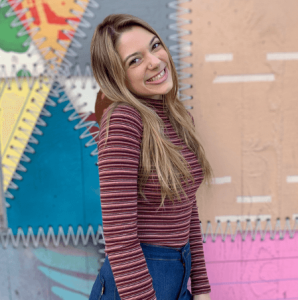
Téa
Pusey
University of California, Merced, CA
Téa, (with the accent over the e, "just like in Beyoncé,” she commented,) has a deep love for music. In high school she loved theater and choir. Although neither are available at the UC Merced where she is now a rising senior, she would love to do theater again sometime in the near future.
Téa remembers becoming interested in science in the seventh grade, and loved doing dissections, learning about heritage through family trees, and genetics. During her sophomore to senior years at Carlmont high school she was part of the biotechnology institute (BTI), where she learned advanced lab skills like PCR. Today, she plans to go to graduate school to earn a Ph.D. in science education.
In 2020 she took part in UC Merced’s Summer Undergraduate Research Institute as a Summer Undergraduate Research Fellow, where she was able to analyze the classroom observation data. She enjoyed working with STEM faculty and co-authored “Look who’s talking: teaching and discourse practices across discipline, position, experience, and class size in STEM college classrooms”, which is in preparation with Bioscience.
This summer she is working on a couple of projects with Dr. Martin and Grace States; currently she is conducting and analyzing interview data on deaf and hard of hearing students’ experiences presenting in classroom consisting of mostly hearing students. The partner team works together conducting interviews and coding qualitative data. The interview results will hopefully reveal recommendations to provide faculty, interpreters, hearing students how to support deaf and hard of hearing students when giving presentations.
Additionally, Dr. Martin, Téa, and Grace are working on a paper written on communication physics education alongside Dr. Zwickl. They are particularly focused on the skills that go beyond the technical skills—the way in which physics graduates are able to communicate to industry and not just academia. The goal is that Téa and her summer research partner will provide a paper to share, which will help future physics communication assignments become more applicable.